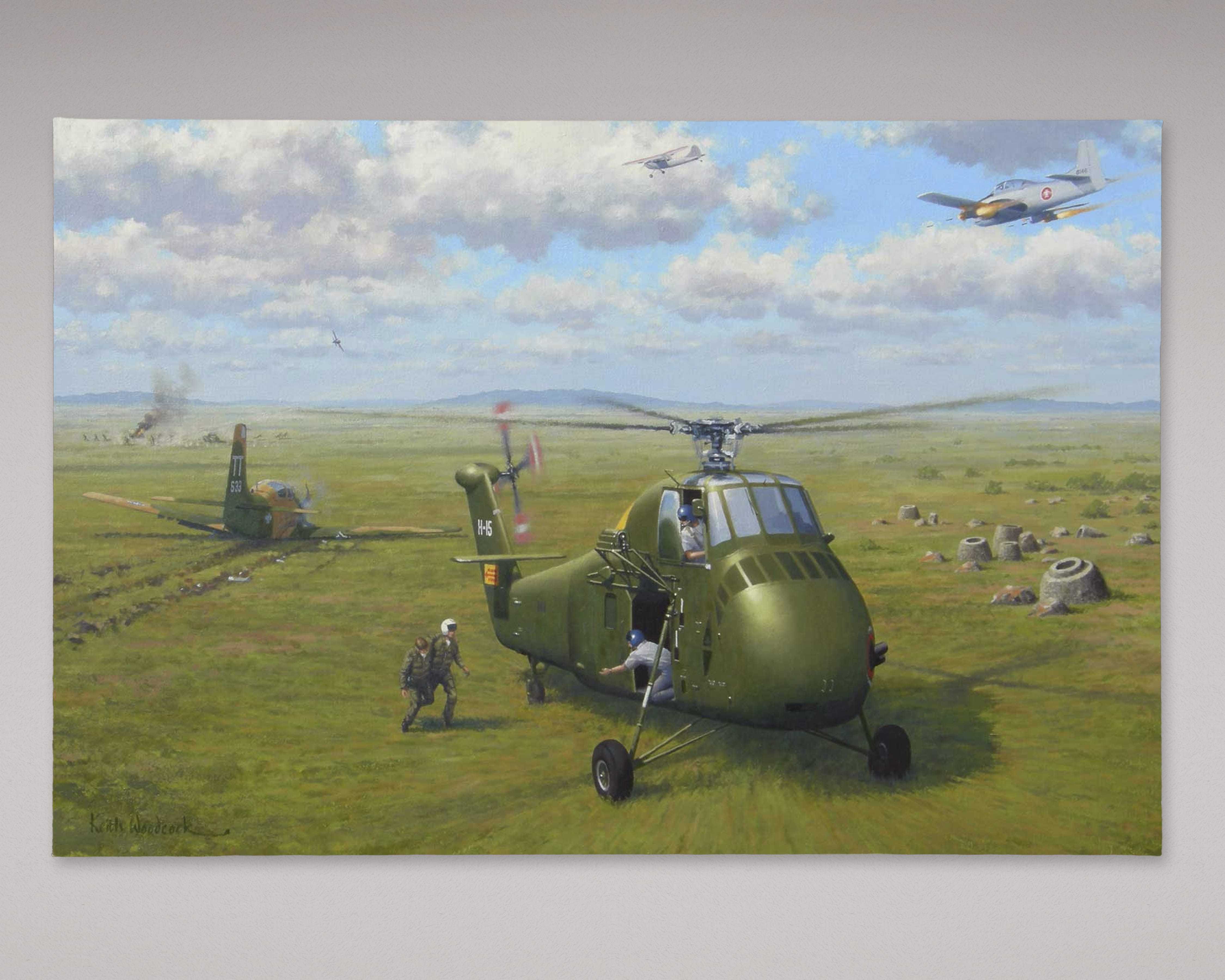Art Details

Laos was the largest paramilitary operation in CIA history.
Keith Woodcock
2008
Oil on Canvas
Donated Courtesy of the Air America Association Board
When President Kennedy decided in 1961 to forcefully resist rising Communist aggression against the remote but strategically located Kingdom of Laos, the CIA – and its proprietary airline Air America – were ready. Flying in a mountainous land-locked country with few roads, continually shifting weather conditions, and virtually no navigational aids, Air America crews routinely conducted hazardous resupply missions to hundreds of government outposts. This aerial lifeline provided essential assistance to Royal Lao and US-directed forces battling North Vietnamese and Pathet Lao Communist troops.
Air America crews became expert in the terrain and unique flying conditions of Laos, but they were not immune to enemy ground fire and the perils of being shot down over enemy-controlled territory. They soon created their own search and rescue (SAR) force of UH-34D helicopters and T-28D attack aircraft and began to respond to their own emergencies. As more US military aircraft began flying missions over Laos (and later over North Vietnam), Air America took on the prime responsibility for rescuing all downed US aviators.
The Airmen’s Bond depicts the heroism of an Air America UH-34D crew conducting one such rescue of two US Air Force A1E bomber pilots. Overhead, a “Raven” forward air controller flying an O-1 observation plane directs two Air America-piloted T-28Ds in strafing runs against advancing Communist forces. The rescue takes place on the Plaine des Jarres, a critical Communist supply route in the high plateau of north-central Laos. The area, which became one of the most bombed places on earth, derives its name from the presence of hundreds of large stone jars. Believed to have been used as funerary urns by a Bronze Age people, the jars range in size from 3 to 10 feet in height and can weigh more than 10 tons.
Over the long and difficult course of the Vietnam War, the Central Intelligence Agency provided extraordinary and mostly unheralded support to the US military. From 1964 to 1965, when the US military had few SAR aircraft in the region, Air America rescued 21 American pilots. Although the US Air Force did not continue to publish further statistics on Air America rescues and the CIA never tracked such data, anecdotal information suggests that Air America air crews saved scores and scores of American military airmen. Often at great personal risk, they did so for their fellow flyers and for their country.
Learn More
Air America: Upholding the Airmen’s Bond
Recollections of a Case Officer in Laos, 1962-1964
CIA Air Operations in Laos, 1955-1974: Supporting the “Secret War”
